Exhibits
Our Exhibits are short collections of documents (typically > 10) from our digital archive, curated by the WFTA team, to provide a quick overview of a particular theme. These would be particularly useful for students who are new to the topic or archival research. We have also included research notes and reading lists for students and researchers alongside each document within an Exhibit to highlight why these documents are important.
Correspondence from Blair to Bush Prior to the Invasion of Iraq
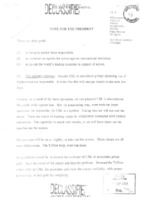
These notes and letters were all sent to George Bush by Tony Blair between 12 September 2001 and the invasion of Iraq in March 2003.
They have been collated to demonstrate the Blair government’s motivations for aiding Bush in the invasion of Iraq as well as to offer insight into the decision-making processes that preceded the invasion.
Whilst we only have access to the British side of correspondence, analysis of these documents aids our understanding of foreign policy and its processes as well as the gradual growth of concern regarding the security risk posed by Iraq that intensified between 2001 and 2003.
Destruction of Cultural Heritage in Iraq
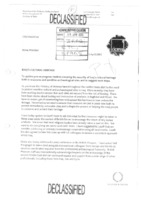
In the chaos that ensued during the war in Iraq, the region became susceptible to the looting of its artefacts and archaeological sites. Widespread looting by Western troops occurred in the area in what was called “the greatest cultural disasters in recent Middle Eastern history” by the New York Times.
The documents in this exhibit would be useful for those researching the destruction of Iraqi cultural heritage during the Iraq War, and would especially help the researcher understand Britain’s response to the aforementioned destruction.
Harm to Indian Troops and Officers during the Mesopotamia Campaign
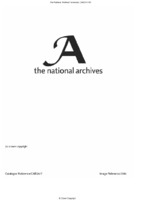
Focusing on Sir Stanley Maude’s victory address to the people of Baghdad, this exhibit highlights the difference between how the sacrifice of Indian troops and officers was acknowledged in the Mesopotamian Commission compared with Maude’s speech.
The first source clarifies the Indian contribution to the war effort according to data collected by the War Office. The second source – Maude’s address to the people of Baghdad – highlights Maude’s ignorance towards the sacrifice of Indian troops and officers during the advance. The final three sources study the Commission’s scrutiny of British treatment of Indian troops and officers; it also investigates how the Commission’s data was collected, and when did this data become readily available to high-ranking British officials.
Indian Involvement in the Mesopotamia Campaign

This exhibit contains reports speaking of the Indian contribution to Britain’s army, in specific numbers both in terms of manpower and material support.
This collection of documents would be a useful source for those trying to understand the various aspects of the Indian involvement in the Mesopotamia campaign of the First World War. However, our project focuses on collecting documents collated/produced by the Mesopotamia Commission and these documents do not include Indian voices. For understanding this side of the story, we have listed below some additional resources that might be useful. These include helpful secondary literature as well as letters, diaries, songs, and other primary sources.
Shia Violence During the Invasion of Iraq
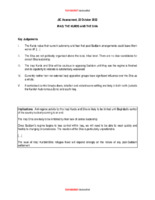
This group of documents discuss Shia violence during the invasion of Iraq. They consist mainly of Joint Intelligence Committee documents allowing us an insight into the intelligence available to the coalition. This allows us to understand the reactions of the coalition forces to unrest driven by religion. The sources are varied in their analysis of regions which provides us with a broad understanding of Shia tension across Iraq.
Sunni Arab Violence During the Invasion of Iraq

This collection of Joint Intelligence Committee documents discusses Sunni Arab violence following the invasion of Iraq and the removal of Saddam Hussein. Following Hussain’s removal, the predominantly Sunni government of Iraq was replaced with individuals who were coalition-friendly and predominantly Shia. This led to the growth of sectarian violence and insurgency within Iraq.
These documents allow us to trace the changing threat of Sunni Arab violence to the coalition over the course of the invasion and subsequent occupation. Furthermore, we are able to understand how and why Sunni violence posed a threat as well as why Sunni Arabs were motivated to oppose the new Iraqi regime.
The Humanitarian Situation
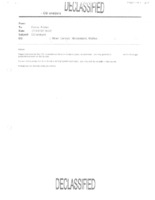
This collection of sources discuss the humanitarian situation in Iraq during the invasion. The sources discuss a range of topics from analysing the humanitarian situation prior to the invasion to which international actors need to provide support and aid. These sources will be useful to scholars examining human rights and the provision of aid during conflict or could provide an opportunity to examine the military’s poor planning in terms of the planning of humanitarian assistance.
The Iraqi Oil Sector

These sources discuss the complexities of re-establishing the Oil Sector within Iraq. They deal with a number of issues such as governance, development planning and ensuring British interest and involvement in the region’s oil production and distribution.
These sources can help scholars understand the barriers ministers and organisations faced regarding these issues as well as Britain’s standpoint on more ethical and political issues. As an oil rich state, these sources provide us with a substantial understanding as to why Britain remained so active in Iraq following the invasion.
